
The inspiration behind this post comes from the response we received during the blog launch from people who had a limited knowledge base when it came to science and were looking forward to how we could help them. This one’s for you:
Below I have compiled a list of 10 common myths prevalent in science; all of which I have come across at some point in my life. If you are guilty of believing some of these – do not despair. You are not alone.
In some cases you are not to blame. A lot of these you were probably taught in school. Or came across in science fiction books and movies.
It’s time to school out that ignorance.
I suggest you take a seat for this one. Get ready to question what else in your life is a lie. And be prepared to have your mind blown:
EDIT: In a previous version of this blog post, we mentioned that the Great Wall of China was 11km long (?!). The Great Wall is actually 8851.8km in length! Thank you very much to Archon’s Den for pointing out this wildly obvious error! It has since been corrected.
1) “There is no gravity in space”
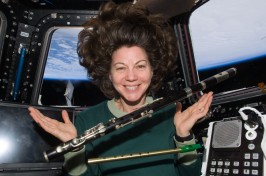
Objects in outer space float because there is no gravity? WRONG!
Gravity is the force of attraction that occurs between any two objects with mass. Gravity applies everywhere in space – yes, it is weaker in some places than others, but it’s still there.
Since the strength of a gravitational pull depends directly on the mass of the objects, a person on Earth will experience a very powerful force of attraction due to the mass of Earth. The same person in orbit will also experience a tug from the Earth, but it is weaker, given their distance from the Earth’s centre has increased (only about 10% weaker at the ISS!).
The astronauts you see “floating” about in their space crafts orbiting the Earth are actually just falling towards the Earth at the same rate as their spacecrafts, what physicists call “free-fall”. So how do they manage to stay up in Space then? They are falling towards Earth but keep missing, because they are travelling so much faster sideways around the Earth than they are towards the Earth, and hence remain in what we call an “orbit”.
These astronauts are experiencing a phenomenon known as weightlessness. The astronaut is being pulled towards the Earth – let’s call this direction “downwards” – due to the force of gravity. On the surface of the Earth, there is also a force acting “upwards” exerted by the ground. In fact, this is how we measure your mass using a bathroom scale. Astronauts float when this upward force exerted by the floor becomes zero. And this occurs when the spacecraft and the astronauts are in free-fall (as in orbits).
(Check out this awesome explanation of weightlessness by The Curious Engineer here)
2) “When exposed to the vacuum of space, the human body explodes”
Don’t get me wrong. You will still die if exposed to the vacuum unprotected long enough, but your worst nightmare is just postponed to about 15-30 seconds after exposure begins.
This “increased” life expectancy only works provided the unfortunate space walker exhales instead of inhales when exposed. You would think an extra lungful of air would be a good idea, but exhaling prevents your lungs from exploding as the air inside rapidly expands.
Since you will be in a zero pressure environment, the water in your body will begin to vapourize. Your skin will then start to swell. But don’t worry, your skin is strong enough to still keep your precious human form intact! However, these rapidly vapourising liquids will carry any heat they have away from your body. This means your eyes, nose, mouth and throat will all rapidly freeze over.
So no, you will not burst into smithereens. You will just die due to a lack of oxygen (asphyxiation), freezing, pain, shock, internal hemorrhaging caused by exploded lungs, or a likely combination of all of the above.
No oxygen also means you also won’t decompose in space. In all likelihood, if there isn’t any heat around, you’ll just be a frozen corpse floating through the vacuum.
3) “You can see the Great Wall of China from the Moon”
I agree. A wall that is nearly 9000km long, ranging from 5m to 8m in height, built over two thousand years ago, truly is a masterpiece-but China’s Great Wall is not that impressive.
We’ve sent a dozen people to the moon. None of them ever saw this Wonder of the World while up there. Actually, the Great Wall cannot even be spotted from the International Space Station (ISS) which is between 330km and 435km above the Earth,let alone 384 000 km (Earth-Moon distance)!
4) “The seasons are caused by the distance of the Earth from the Sun”
When our friends in the Northern Hemisphere are closest to the Sun, they’re in summer, right? And we Southerners are further away and that’s why it’s winter, yeah? NO.
The seasons are cause by the angle at which the sun strikes the Earth. The Earth rotates about a tilted axis (at an angle of ≈ 23.5°). This means that when one hemisphere leans towards the Sun, it is hotter and experiences summer. The other hemisphere hence is tilted away, is colder and experiences winter, This phenomenon is independent of the orbital distance between the Sun and the Earth.
Funny enough, the combined effect of the Earth rotating about its axis and orbiting the sun in an ellipse (a sort of wonky circle) actually means that the Northern Hemisphere coincidentally experiences summer when it is at its furthest distance from the Sun and not the closest!
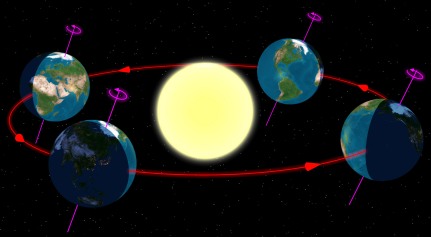
5) “Black holes are literally holes”
Really??!
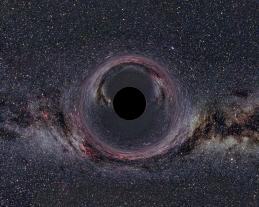
Black Holes result from the death of an extremely massive star. When the star is dying it will eventually collapse in on itself. It becomes extremely dense which means it has an intense gravitational field. This causes any object caught close enough in this field to experience a pull towards the Black Hole from which it cannot escape.
Even light, that travels at a staggering 300 000 km/s, cannot escape a Black Hole. This is why we cannot see them.
So no. It’s not a hole. Its just a region in space with a large amount of material squeezed into a really small space (extremely dense). And if you ever found yourself near one, you should know that your end is near.
6) “Evolution is just a theory, hence it can be false”
Yeah, well…Evolution is JUST a theory. Not a fact. It can be wrong.
The concept of a theory in science seems to carry a different meaning when it comes to the general public. A theory is not a guess or speculation. It is a framework containing a set of laws and principles that can be observed in nature and is supported by evidence.
By definition of a theory, yes it can be proven wrong (falsifiable) if new evidence presents itself. No evidence has yet been presented that contradicts, or can not be explained, by the Theory of Evolution by Natural Selection. Saying that Evolution – or any theory for that matter – is wrong because it is “just a theory” is just incorrect.
One of the reasons many people struggle to grasp the theory of Evolution is that we, homo sapiens sapiens (No that’s not a typo. It’s sapiens x2), weren’t around 3 billion years ago, so we tend to believe it is impossible to observe. This is compounded by the false idea that we believe we do not live long enough to observe evolution. In a sense, this is only true at least when it comes to large mammals. But we can observe evolutionary processes such as speciation quite easily.
So what is speciation? Firstly, a species is defined as “the largest set of any organisms in which two individuals are capable of reproducing fertile offspring”. You can think of speciation as a process in which two or more groups of organisms previously of the same species no longer meet this criteria.
This often occurs in nature when a single species is divided into smaller groups by geographical or physical barriers, presenting each group with a different set of conditions (climate, food etc.). With time, the result will be two or more separate species that evolved from a single “ancestor” species.
This process can also occur through different eating habits, social circles, reproductive cycles, disaster and even artificial selection – a process in which humans directly influence the selection of surviving offspring (think of dogs). We engage in artificial selection all the time and it is the main reason for the variety of dog breeds present today but also the large selection of crops we have on offer (maize, or mielies, are an example).
Further, despite common belief, we observe natural speciation in action all the time, recording it in mice, beetles, finches, insects, microorganisms – even antibiotic resistant bacteria is a form of evolution! Read more on speciation here.
Evolution is as much a theory as the theory of gravity.
7) “Albert Einstein failed mathematics in school”
You really wanted that one to be true, didn’t you? Shame.
This one, I seriously don’t blame you. I remember being brainwashed about this at school too. Honestly I don’t know if it was supposed to comfort you that even Einstein was bad at Maths. Or make you feel like crap that he was poor at Maths but still excelled at being one of the greatest physicists in history- like what’s your excuse?
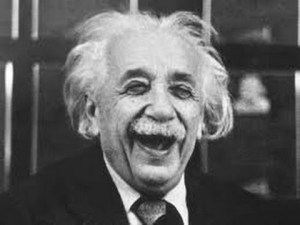
Einstein was actually brilliant at Mathematics. At age 12 he is reported to have learned Algebra and Geometry on his own (with his unique way of proving the theorem of Pythagoras!). By age 15 he mastered Calculus– a whole 3 years in advance.
Einstein was poor at languages. This too worked in his favour because from an early age he developed the skill of thinking by means of images instead of words. Hence resulting in Einstein’s famous Gedankenexperiment or thought experiments. These experiments were crucial for the development of his theories of Special and General Relativity (Yes. Theories. That actually means something).
(Check out possible origins of this myth here)
8) “We only use 10 percent of our brain”
Humans only use 10% of their brains, and if they are able to harness the other 90%, they’ll be able to move objects with their minds? Sorry Matilda. It’s all fiction, dear.
Plot twist. We actually use (almost) all of our brain. Even whilst sleeping!
Our brains are made of a network of neurons which are responsible for carrying and processing information and carrying instructions to and from the brain. Whilst there is only a small percentage of neurons that are active at one time, the inactive neurons are significant too.
This myth has been around for quite some time now. It even made the rounds recently in Luc Besson’s movie Lucy (2014), where Scarlett Johanssen’s character Lucy is exposed to a drug that allows her to unlock the full 100% of her brain’s capacity. She ends up with some crazy abilities including telepathy and learning Mandarin almost instantly. But none of it is true!
The 10% myth is believed to have originated from the early neurologists who only understood what 10% of the brain did – and not that we only USE 10%!
Another possible origin of this myth comes from psychologist Professor William James who is falsely reported to have said, “…the average man develops only ten percent of his latent mental ability.” James in fact never put an exact percentage to his statement. He did however say that humans only meet a fraction of their mental abilities.
So the next time you hear someone crediting Einstein’s intelligence to the harnessing of more than 10% of his brain, it’s time you introduce the ignorant soul to the other 90% of their human brain!
9) “Lightning never strikes the same place twice”
“Lightning never strikes the same place twice” is just an old idiom. It was meant as a means of comfort – that an unfortunate event cannot happen to the same person in the same way more than once.
Somehow it became fact to the general public.

Lightning involves a surge of negative current being sent from a cloud to the ground. The objects on the ground are carriers of positive charge. Since opposite charges attract: when the two charges connect, we have a spark of lightning. Taller objects are more effective carriers of this positive charge making them ideal targets.
Lightning can actually strike the same place, not just once, but multiple times. The Empire State Building, for instance, is reported to be struck by lightning about 25 times a year!
If you happen to be caught in an electric storm, I suggest you stay away from tall trees, high buildings AND any spots that have already been struck.
10) “Microwaves are radioactive”
Chernobyl. Fukushima. History is proof of how fatal radiation can be. Microwaves are no different. They’ll be the death of you!…Uh, no they won’t.
Firstly, to Team Anti-Microwaves, what is radiation? Radiation is simply the transmission of energy (in the form of something called Electromagnetic waves or EM waves).
Different types of EM waves are associated with different energies. The really high energy EM waves possess the energy needed to cause mutations and even breaking apart of the atomic nucleus. Microwaves, on the other hand, fall in the lower energy, lower frequency, end of the spectrum (see below).
Even the visible light region of the spectrum is of a higher energy than Microwaves. The radiation you need to be more worried about are Ultraviolet Rays (UV rays) from the sun, X-rays and Gamma-Rays (This is where the idea of The Hulk came from).
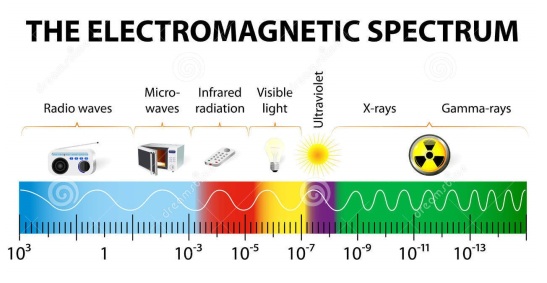 Electromagnetic Spectrum (NOTE: Energy increases from left to right)
Electromagnetic Spectrum (NOTE: Energy increases from left to right)
So how does the evil Microwave machine, whose sole purpose is to kill you, actually work?
The EM waves present in your microwave have just enough energy to jiggle the water molecules present in your food slightly thus increasing the general temperature of last night’s mac and cheese – certainly not enough energy to damage the cells in your body.
So no. Your recently warmed food is not radioactive! I’d be more concerned about ensuring I’m wearing enough sun screen with a decent Sun Protection Factor (SPF).
Now that you’re about 10 facts wiser, it’s time to get out there, bring real science to the world and most of all make AstroSisters proud!

The one about Einstein really got to me. I feel like my entire childhood was a lie.
LikeLike
The Great Wall of China is a tad more than your stated 11 KM long. 🙂
LikeLike
If we used consciously used 100% of our brains, we would have to think about breathing. And reacting to suddenly not breathing. We would freak about about everything because we’ve become aware of everything. Imagine becoming suddenly aware of your own tongue.
LikeLiked by 1 person
That’s very true and really gets you thinking existentiallly! Actually, it raises some interesting questions, especially if scientists don’t fully understand the human brain!
If you’re interested in reading more, go check out this ScienceAlert post:
http://www.sciencealert.com/watch-you-are-actually-two-brains-living-in-one-person
It’s got a link to two very awesome videos which may make you question yourself!
LikeLike